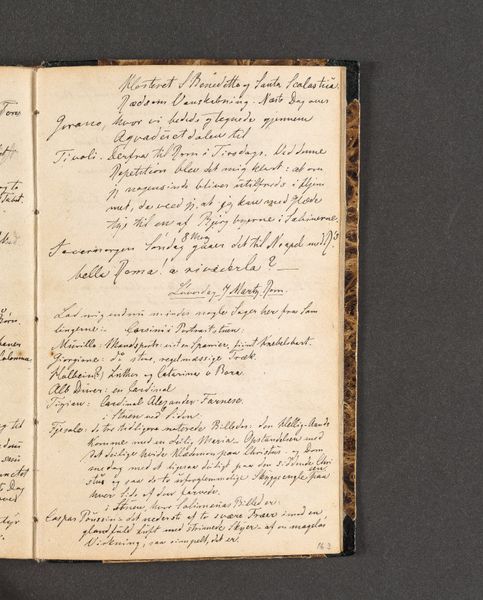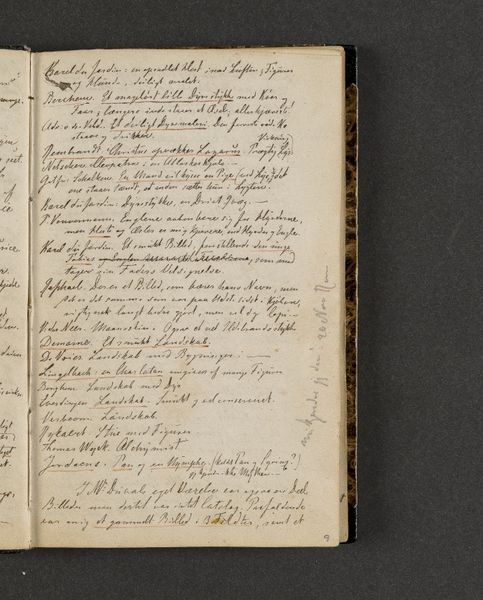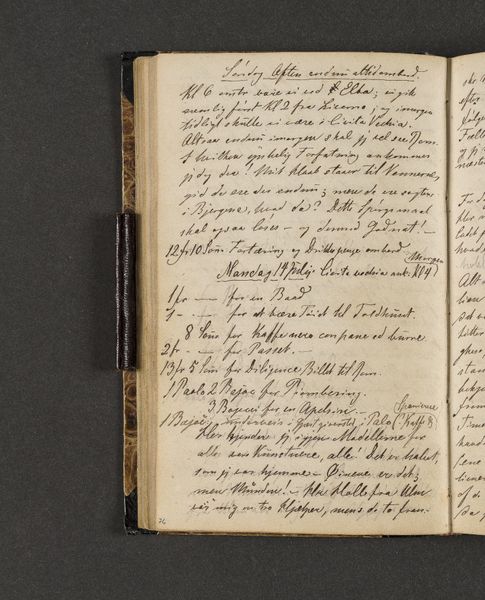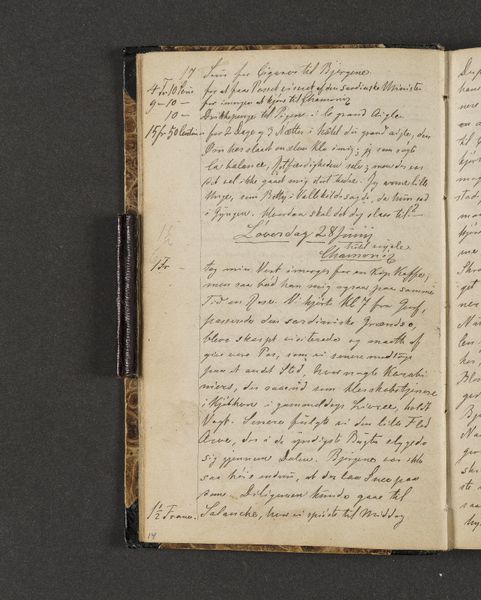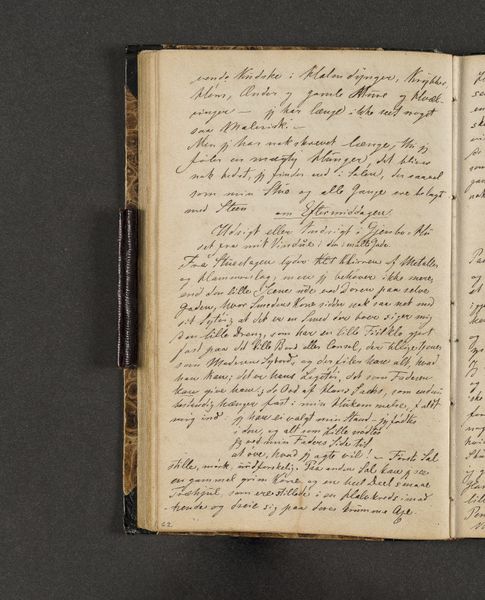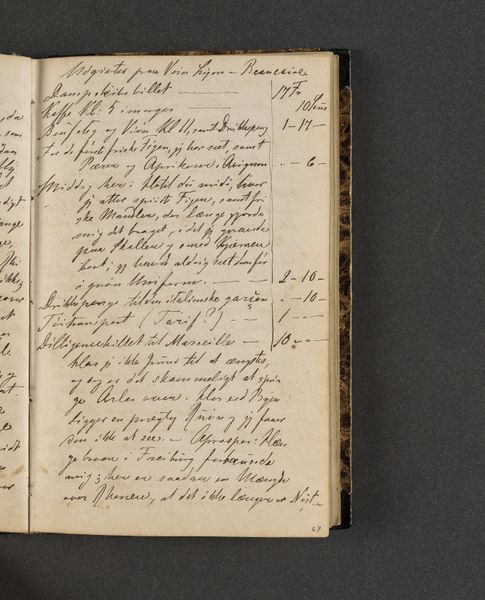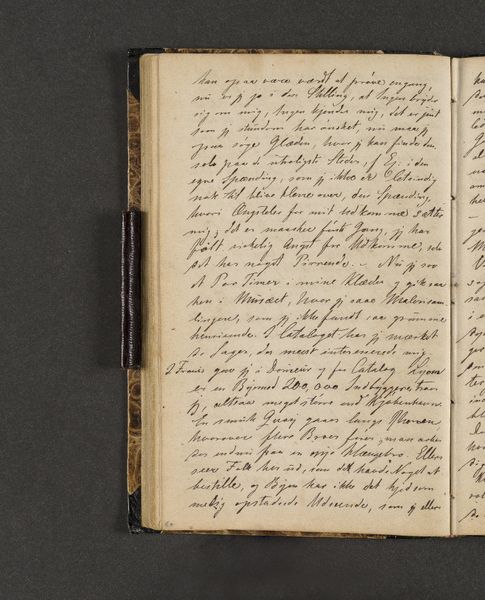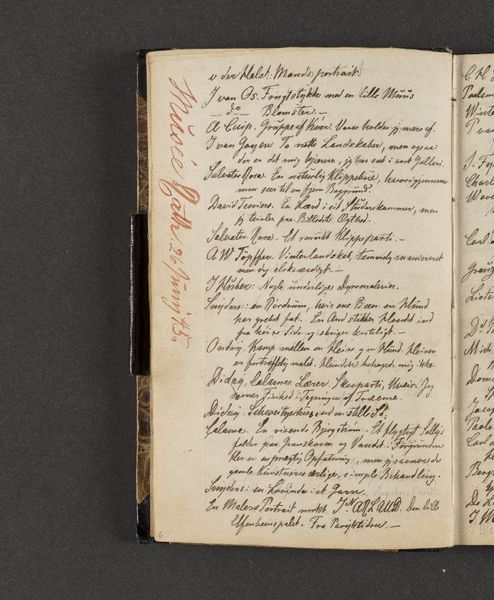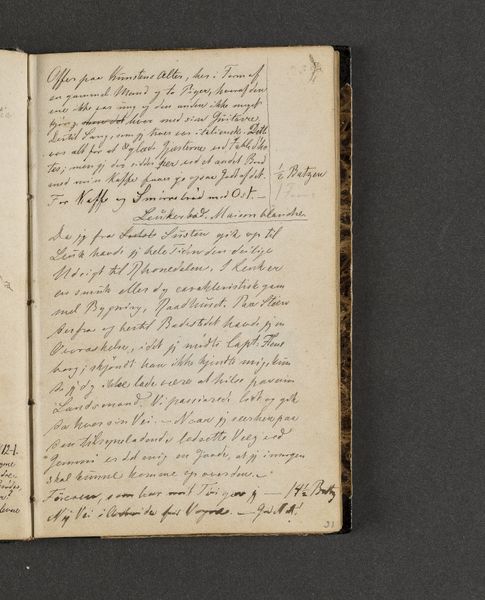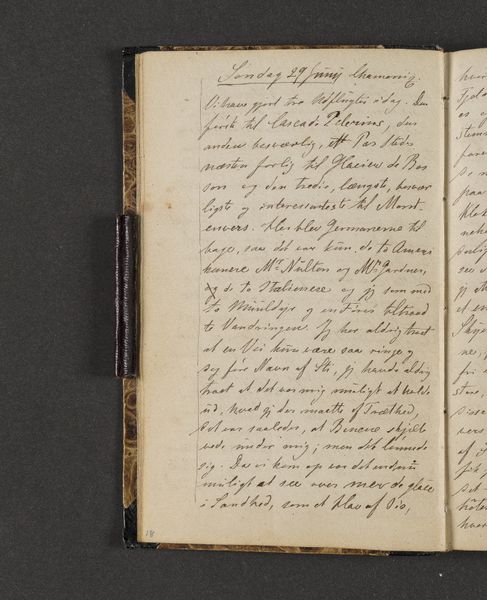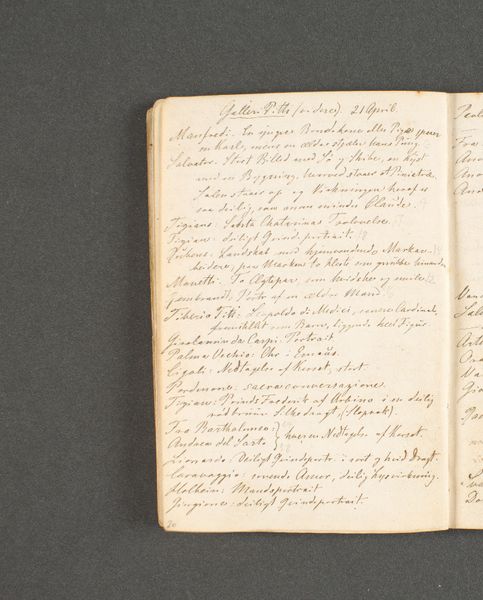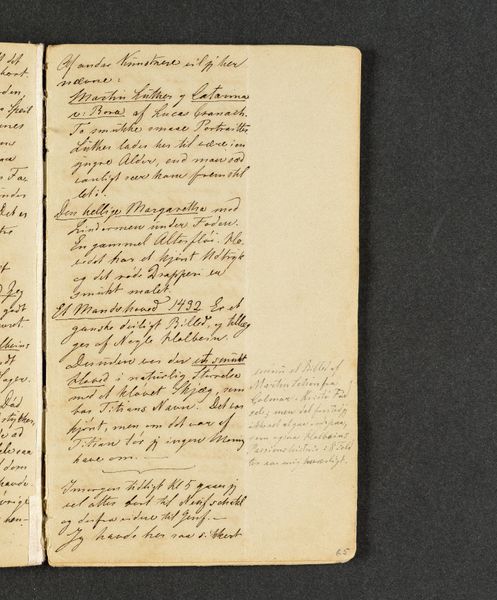
drawing, paper, ink, pencil
#
portrait
#
drawing
#
landscape
#
paper
#
ink
#
romanticism
#
pencil
Dimensions: 161 mm (height) x 103 mm (width) x 11 mm (depth) (monteringsmaal)
Curator: We’re now looking at a page from Johan Thomas Lundbye’s "Rejsedagbog" or "Travel Journal" from 1845, currently residing in the SMK, the National Gallery of Denmark. Editor: It feels incredibly intimate—like stumbling upon a private thought. The script dances across the page, a blend of ink and pencil sketching offering snapshots—perhaps architectural, or studies of figures? The color feels uniform and very serious and precise. Curator: Exactly. Lundbye was a Romantic painter deeply invested in portraying the Danish landscape. This sketchbook provides unique access to his process. We see notes interspersed with drawings in ink and pencil on paper, revealing his immediate responses to places and people encountered on his travels. Editor: It strikes me as more than just casual note-taking; look at the precision of the script and how the sketches seem to analyze scenes more than document them. How might the paper and ink choices have reflected his relationship to landscape as material and idea? Curator: Undoubtedly, the materials matter immensely. In Romanticism, there's often a search for authentic experience, and drawing directly from nature with readily available tools—pencil, ink, paper—connects the artist viscerally to the environment and reflects the democratization of artmaking. Editor: Though the act may be democratic, his skill lends hierarchy and the scale provides intimacy but feels a little self-contained in that regard. I also wonder how much these were refined or idealized afterward for other projects. His engagement with landscape seems filtered through an aesthetic lens, consciously striving for beauty through visual analysis, considering color harmonies and composition. Curator: Of course, Romanticism never shied away from idealization; but seeing the raw sketches alongside the writing is illuminating. We gain insight into Lundbye's labor and the daily routines shaping his artistic vision. Consider the socio-political landscape of Denmark at that time—how did Lundbye’s materials contribute to forming his Danish identity, or how his artistic choices both reflected and helped shape it? Editor: That adds another layer to appreciating these intimate observations. I see more clearly now, his commitment and keenness with visual vocabulary which ultimately produced such intimate landscapes.
Comments
No comments
Be the first to comment and join the conversation on the ultimate creative platform.
